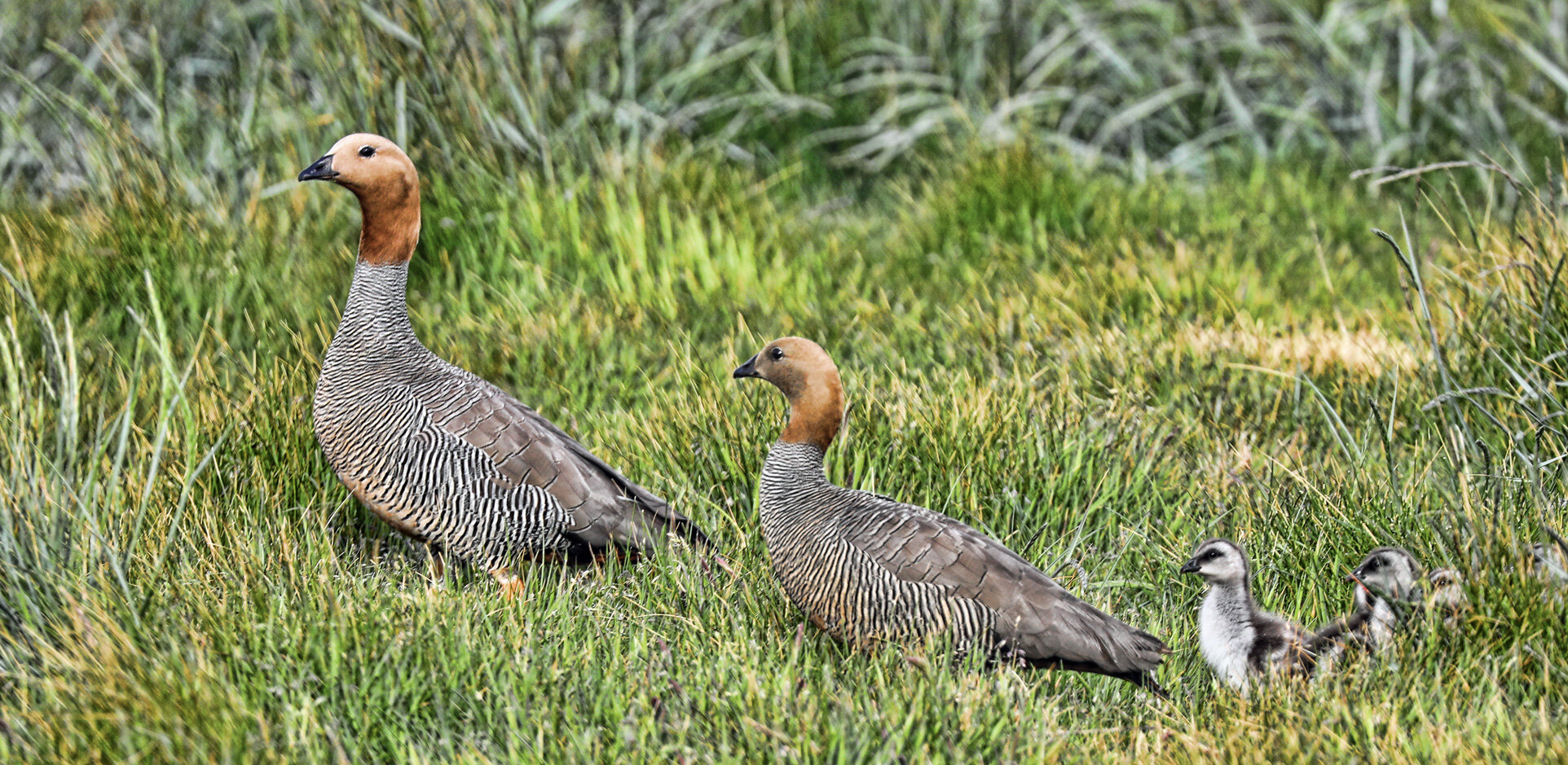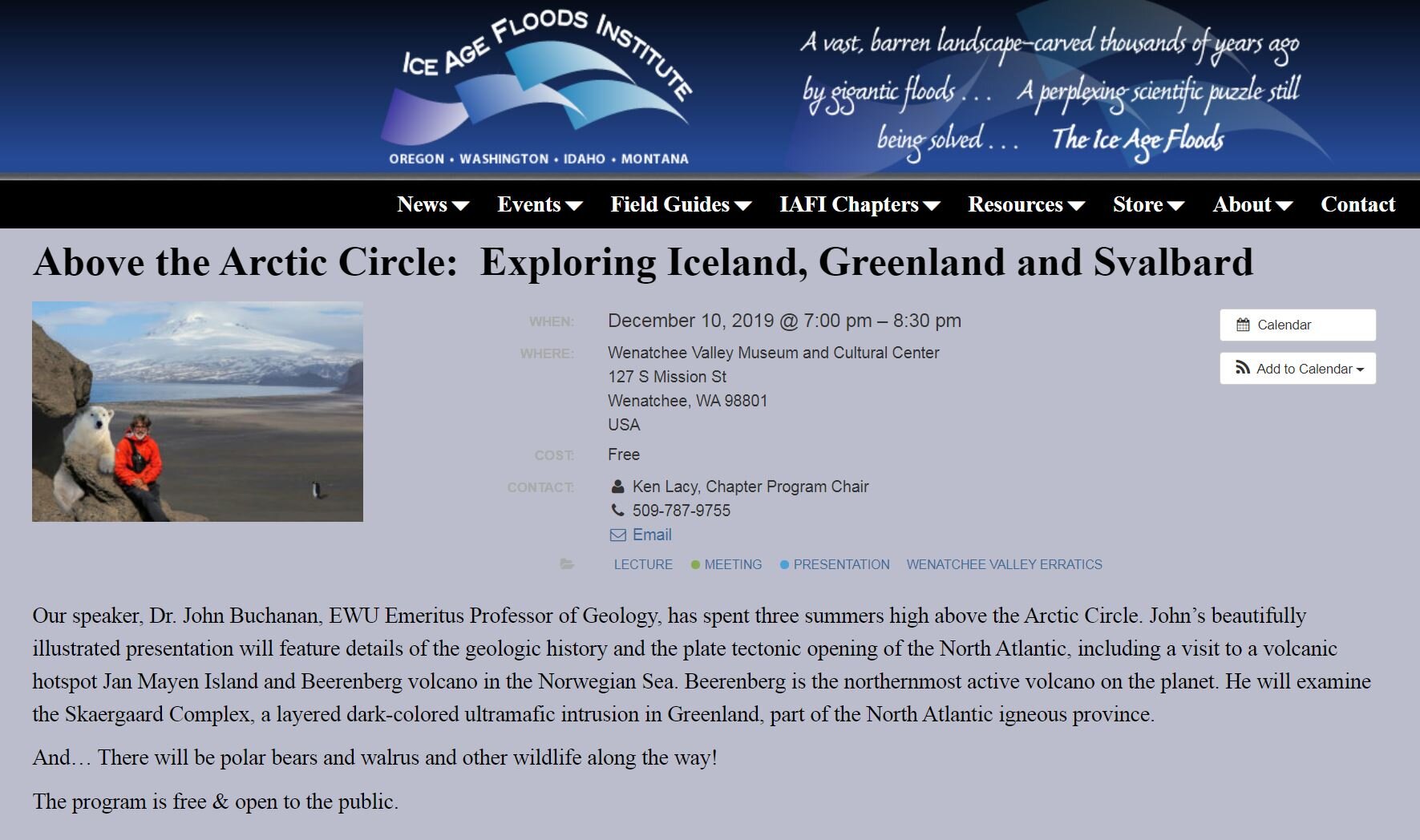in Hercules Cove, South Georgia.
On the sixth day...
God created the Salisbury Plain on South Georgia, with an estimated 250,000 King Penguins!
Neither words, nor pictures, can describe the magnificence of this remote place.
I derive great joy knowing that this goes on every single day, throughout the year. When I am feeling stressed at home, I visualize this scene.
Merry Winter Solstice...
to those in the northern hemisphere, while we enjoy the longest day of the year in the southern hemisphere!
King Penguins at Fortuna Bay, South Georgia.
A brief stop at Grytviken...
in order to bring inspection officers of the South Georgia government aboard the ship.
The restored whaling station at Grytviken.
Captain Roman Obrist on the bridge, maneuvering the ship for this quick stop.
British Antarctic Survey station at King Edward Point, staffed year round.
Prince Olav Harbour...
on South Georgia was first discovered by James Cook in 1775, and shortly thereafter the sealers arrived.
The Brutus, a coal carrier, now a rusty relict.
The old sealing station, slowly decaying into the landscape.
Antarctic Fur Seal.
Since the cessation of sealing, the population has rebounded.
West Cumberland Bay...
on our first approach to South Georgia.
The Allardyce Range, draped in glacial ice and snow, rises to nearly 10,000 ft above sea level.
Folded turbidite sequences in the Cumberland Bay Formation, with Lyell Glacier in foreground.
Avian mariners of the Southern Ocean...
following the ship this afternoon between the Falklands and South Georgia.
Wandering Albatross, wingspan nearly eleven (11) feet!
Black-Browed Albatross, wingspan approximately eight (8) feet.
My home away from home...
for the next three weeks aboard the brand new expedition ship Hanseatic Inspiration.
The lecture theater with floor-to-ceiling high resolution panels. There’s even a bar, something not found in most university lecture halls!
The “Ocean Academy” where lecturers can engage in hands-on activities.
My home office, with my own balcony!
New Island...
in the northwestern part of the Falkland Island group is our first expedition landing.
Upland Goose welcoming our first guests ashore.
Ruddy-Headed Geese.
Red-Breasted Meadowlark.
Black-Browed Albatross sitting on nest.
Blue-Eyed Cormorant.
Kelp Goose having breakfast.
Southern Rockhopper Penguin.
Embarking Ushuaia...
and heading to the Falkland Islands.
Leaving the port of Ushuaia, Tierra del Fuego, Argentina.
Southern Giant Petrels commonly follow the ship, playing in the draft.
The SGP bony beak, consisting of nine plates. The upper tube is a saltwater excreting structure.
Sunset at the end of our first day at sea.
Serious technology on your wrist...
On the aircraft, window seat (of course) taxiing at Spokane International Airport. Location is indicated by blue icon with red line indicating the track.
Detailed street map of Ushuaia, zoomed out here for a wide view, location indicated by the blue icon in center of display.
The Garmin FENIX 6X Pro is a very serious bit of technology that I am test driving for REI on this expedition. I have preloaded topographic maps for all of the western states at 1:24,000 scale, as well as nationwide coverage at 100,000 scale! In addition, I installed maps for Ushuaia, Argentina and Stanley, Falkland Islands, and it is capable of accessing Birdseye satellite images too. It links to your smartphone and Internet via Bluetooth and Wifi, but is capable of functioning for up to two weeks without connection or charging to other devices. WOW! And, oh yeah, it also tells the time (among many, many other things).
Dismal, cloudy, gray Spokane.
From Spokane to Ushuaia...
Northern Arizona - Grand Canyon
Last flight to Ushuaia.
Ushuaia, Argentina, bottom of South America!
My breakfast buddy, a Dolphin Gull.
The beautiful images...
posted on this silly blog are brought to you by the camera kit assembled below for my upcoming work in Antarctica, consisting of two camera bodies and three lenses, a wide-angle for macro and landscapes, a mid-range lens, and a zoom telephoto for distant wildlife.
I also carry the Nikon camera in my float coat for shooting videos and when the conditions are rough and wet. All the stuff laid out on the dry bag are batteries and chargers, my GoPro, tripod, lens wipes, headlamp, scale card, etc. Yes, it’s a lot to carry in the field, but the results are more than worth the effort.
White Island volcano erupts...
off the North Island of New Zealand, killing tourists exploring the active volcanic crater. Link to news stories: https://www.bbc.com/news/world-asia-50708727 and https://www.dailymail.co.uk/news/article-7770695/Volcano-erupts-coast-New-Zealand.html .
On approach with Zegrahm Expeditions in 2015. As exciting as it was to venture into the active edifice, I thought it was crazy risky, but this is the nation that popularized bungee jumping.
Exploring the inner crater and sulfur fumaroles, wearing hard hats and breathing masks.
The crater floor consists of hardened lava perforated by steaming fumaroles.
Sulfur works destroyed in previous eruption in 1914 when 10 miners were killed.
Shameless self-promotion...
for a talk I’m presenting next week in Wenatchee, Washington, to the Wenatchee Valley Erratics Chapter of the Ice Age Floods Institute. The lecture is free and open to the public. Please don’t throw tomatoes.
Following the cordillera south...
to Ushuaia in exactly one week, essentially flying the rocky backbone of both North and South America, more or less. Spokane to Phoenix to Dallas to Buenos Aires to Ushuaia, merely 8,635 mi (~14k km).
After the blizzard...
in Rapid City, South Dakota.
I passed...
the online assessment to work as a naturalist/guide in Antarctica this season. I’ll be heading to the bottom of the world again, for my fourth season, in mid-December!
I’ll join the Hanseatic Inspiration - a brand spanking new expedition ship just launched in October - for its inaugural voyage to Antarctica. This holiday voyage will disembark from Ushuaia, Argentina, then on to the Falklands, South Georgia, Elephant Island and the Antarctic Peninsula.
Two slackliners traverse 1,500 feet between...
The Rectory and Castleton Tower, about 400 feet above the ground. Here are some images acquired from my residence with my big 500 mm lens, about 2.2 miles away.
Look close for the dark speck - nearly at the middle of the image - that’s the slackliner at the midpoint between The Rectory (left) and Castleton Tower (right).
First slackliner approaching the Tower.
Second slackliner resting before the final chug as sunset approaches.
Sister Superior group, at sunset, a bit further down the ridge. Two rescues occurred here on two successive days this last week.

























































